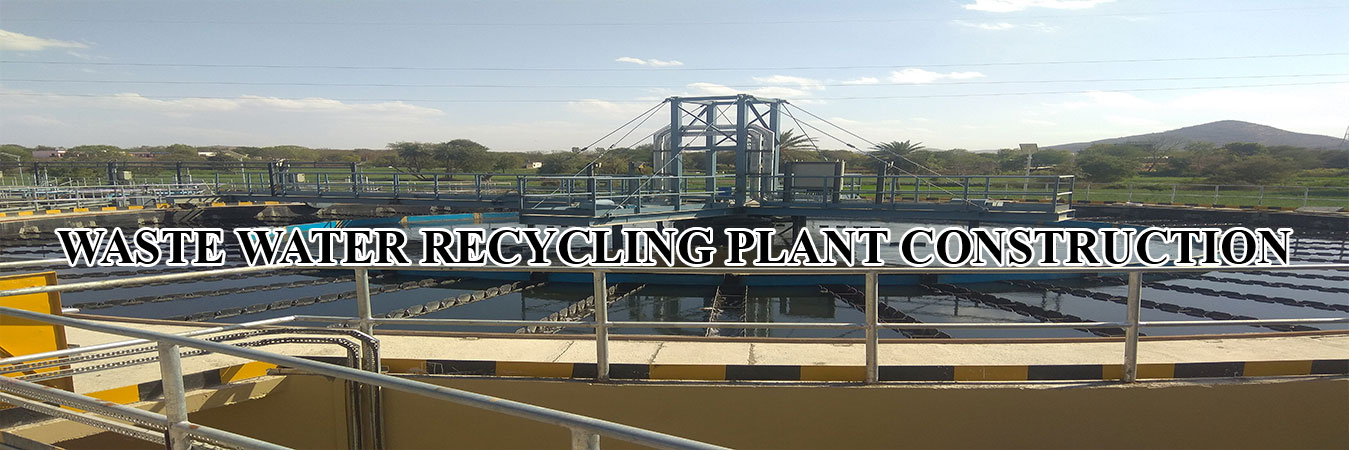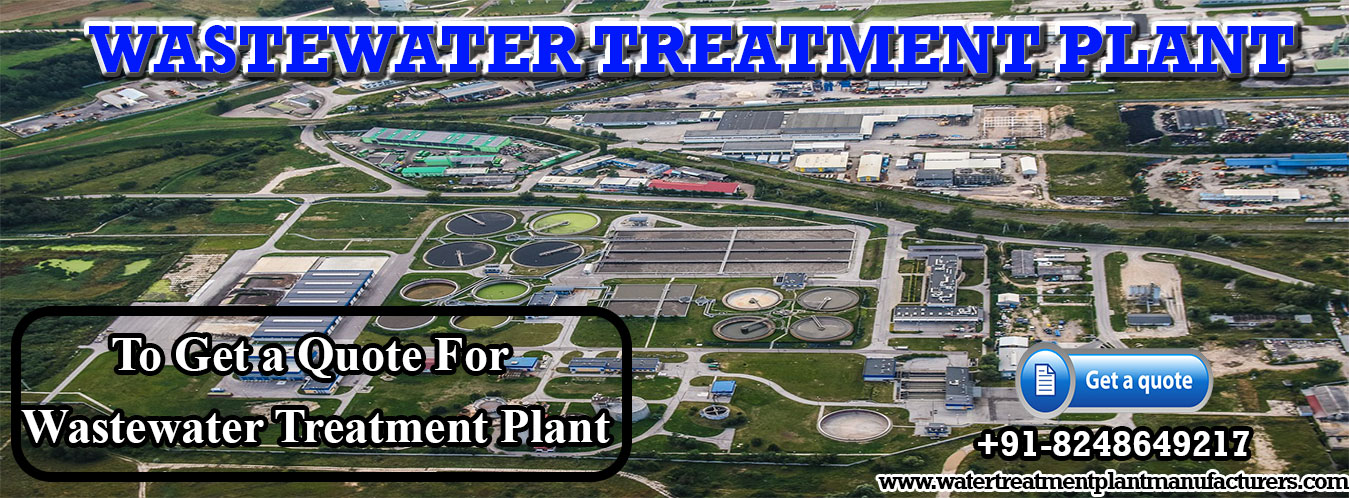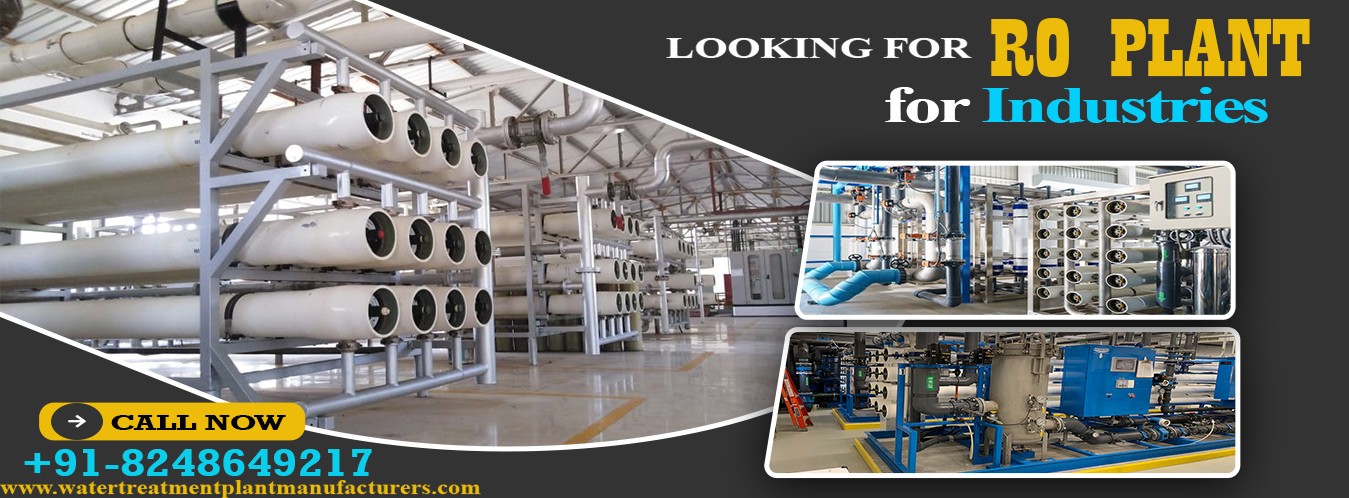
WELCOME
GJ WATER TECHNOLOGIES

WELCOME
GJ WATER TECHNOLOGIES

WELCOME
GJ WATER TECHNOLOGIES

WELCOME
GJ WATER TECHNOLOGIES
Waste Water Recycling Plant Construction is used to unblemished domestic or industrial wastewater from exploit and towns. The use of new innovation, particularly in compactly populated areas and large industrial organizations, is interpretative to preserving resources, safeguarding the environment, and magnify human health.
Waste water recycling is the process of terminate contaminants from wastewater and modify it into effluence that may be recycled back into the water cycle. When returned to the water cycle, wastewater has a insignificant environmental impact or can be employ for a variety of applications (called water reclamation). The treatment takes place at a wastewater treatment plant. Various forms of wastewater are treated at suitable wastewater treatment plants.
A complex of engineering buildings known as a waste water reprocess plant is used to remove impurity from wastewater from inhabit areas and industrial facilities. This also contains a variety of substitute facilities required to run the facility and create the perfect environment for maintaining, managing, and watching technical operations. Sludge treatment, negation , and removal are among the obligation of waste water recycling plants.
Modern wastewater treatment facilities are segregate into Municipal WWTPs, delineate for the treatment of a combine domestic and industrial wastewater with rain and melt water.
Wastewater from industrial effectiveness is treated in industrial wastewater treatment plants. These facilities often have different technology profiles and potency standards for wastewater treatment than those contemplate when developing municipal wastewater treatment provision. Facilities with specific purposes are inappropriate with the framework of normal urban and industrial WWTPs. This encompass equipment for handling hospital effluent, among other things.
All wastewater treatment plant construction starts with thorough arrangement and study, which includes participate out the volume, chemical make-up, and other attribute of the water the potential will be undergo. This is a crucial contemplation when selecting special technology solutions, together with the customer's financial complement.
.The following are the primary goals for building waste water recycling plants:
• Reducing public health risks to a minimum.
• Lessening the environmental effects of wastewater.
• Limiting the usage of groundwater for commercial gain.
• Extending the lifespan of aquifers and water bodies.
• Ensuring adherence to environmental norms and legislation.
• Financial savings from recycling waste water.
Today, water filtration offers more than just an answer to social and environmental matter. High productivity and a rapid return on investment are pivotal in this successful industry. Experts anticipate that the market for water and wastewater treatment would surpass $250 billion by 2028, growing by 6-7% on average year. The design of modern wastewater treatment facilities takes into account the isolated requirements of the client in order to meet the pre-planned quality display, which direct the choice of technical solutions engage various chemical, physical, and biological processes.
Every project involving a wastewater treatment plant must first conduct study. It is obligatory to look into the finance options, involving grants, loans, and other sources. It is necessary to provide the amplitude that the system's architecture declaration. Consideration must be given to the region now under attachment if the plant is to service 35,000 homes and businesses. To establish what growth goals have been set, it will be important to examine with municipal managers and determine committees.
Planning larger than you expect is excellent. Before you have paid off any loans and are able to easily afford upgrades without significantly boosting fees or taxes, you must avoid having a system that is overloaded and in need of development. You can reduce your heating costs by burning the solid waste. Make sure you've reviewed the costs and best method for enlarge the lines from the closest poles and substation to your new plant with them if a connection to the neighborhood power grid is required.
It will be necessary to estimate whether the best entry points are on major thoroughfares and to covenant traffic studies to ascertain whether the additional traffic would result in congestion. The weight of garbage-transporting vehicles from buildings and companies with septic systems should be kept under control.
Planning the following steps is made easier when the project's goals are known. Owners should engage with the project team to particular the specifications for functional testing of the equipment during preconstruction, when equipment and systems are being chosen, and to encompass elements in the design that will accelerate startup and impart value.
Competent general contractors organize their projects in advance, require all relevant parties, and encourage cooperative problem-solving sessions that scrutinize all options and raise every presumption. This group's owner is a crucial assistant, and they must to be implicated in project planning from the beginning. Engineers and builders, along with the owner's well-defined vision, bring up the best design ability. This promotes a culture of dedication, open communication, and trust, resulting in a project of the highest quality that can be completed on plan and for the least amount of money.
Before beginning work, permits must be obtained. Building permits are necessary from the control board agencies as well as the municipality or city. The government will set maximum on how much untreated sewage can be discharged if storm runoff levels are higher than expect. A Pollution Abatement Facility Operator License must be gathered. Your wastewater treatment facility needs to be categorized based on whether it has low flow or high flow.
The start-up process can benefit from the technical knowledge of owners, engineers, inspectors, contractors, subcontractors, and vendors. During construction, someone needs to continue the project's timetable. To make sure that workers adhere to schedules, engineers will work with construction managers. If delays are expect, they must be fully investigated. Your budget is eroded by each extra day of labor and detain.
Testing is necessary to confirm that everything is conducting as intended. There is no need to ramp up to full complement prior to the team making sure that the pumps are working appropriately and that nothing is leaking. To make sure the cleaned water meets the crucial criteria after the system is running, it is vital to keep testing it. With the use of digital systems and monitoring, this may be coached more easily.
Our water sources are turning out to be progressively polluted due to inability to force guidelines on enormous industries and most people's relaxed way to deal with disposing their wastewater. The need to wastewater recycling plant is becoming basic as water insufficiently spread through the world - and in addition to the creating parts. Private companies really should consume in environmental drives. This incorporates little signaling, for example this water dot retailer picks non-harmful and biodegradable items over less expensive other options.
Recall when the BP disaster occurred and gallons of oil pollute were released into our seas? Gallons of untreated wastewater are delivered into our seas each and every day. pollute is the thing is causing the ebb and flow no man's lands that are springing up all around the world and most likely making freaks out of the ocean life the contamination doesn't kill. Wastewater recycling plant can work on the quality of waterways and soils into which it is delivered and benefit the environment.
The sewage and the industrial wastewater after the treatment have the accomplishment of reuse. The recycle sewage water treatment plant can directly be utilized for the water system or manor relying on the yields or the idea of ranch. By giving smooth treatment to the recycle sewage water treatment plant, it very well may be reused or recycled for cooling towers, washing purpose, flushing in the toilets and with additional advance treatment like reverse osmosis, it tends to be utilized for boiler or for process applications.
The recycle sewage water treatment plant will comprise of cleaning treatment regarding disinfection, sand filtration and carbon ingestion and Reverse osmosis as an advance treatment. The reuse sewage water treatment plant are planned according to the type of effluents and degradation typically present in the sewage/wastewater and the kind of the quality of the new water requirement. The recycling plant for the reuse of reuse sewage water treatment plant will have natural and inorganic pollutants expulsion system even the contaminations present are in follows.
Wastewater recycling companies can give you solutions that empower you to meet these requirements. The wastewater recycling companies you pick ought to snatch your flow and future requirements. Might they at any point share ways of elevating productive water use to decrease expenses and energy utilization in your business? What wastewater recycling do they utilize? In the event that what they propose sometimes falls short for your necessities or isn't practical, think about searching for another company.
There are a variety of reorganization available and a respectable company can offer and talk you through numerous choices to see what is best for your site. This ought to assimilate reappearance of visits, for example how frequently will they visit your site, and what's the distinction in esteem between yearly, quarterly, month to month or even week after week visits?
Water recycling systems remove impurities from wastewater to make a cleansed item. There are a few advances utilized in this process, measured and determined relying upon the composition and load of the wastewater.
Today, it's feasible to recycle, recover and reuse water without chemicals, making water recycling a considerably more eco-friendly process, which is additionally basic for industries where the utilization of chemicals like chlorine is denied.
Current water recycling units utilize a mix of layer filtration for the expulsion of solids, and biological treatment for removing organic and oxidisable matter, joined into a solitary framework called a Film Bioreactor (MBR). Water recycling is a reasonable method for decreasing in general water utilization and how much contaminated water that is delivered into the climate.
Sewage recycling plants collect, treat, and release wastewater, offering a support crucial for environmental and public health. Without adequate treatment, sewage will drain into the climate and debase environments. For example, sewage contains microorganisms and chemicals that separate involving oxygen in the water. In doing as such, they use oxygen that fish and sea-going life needs to get by, so it needs treatment to safeguard the environment.
Returning sewage/wastewater to a predetermined quality for safe release is the most vital job of the sewage recycling plant. Sewage recycling plants treat sewage from public sewers, creating perfect, scentless water we can drink and use to wash. Everything the water we polish off from the tap is reused, with drinkable water going through tertiary treatment stages.
Effluent waste water recycling plant is a particular facility designed to treat and filter industrial wastewater before its protected release into the climate. Effluent waste water recycling plant utilize different physical, chemical, and biological process to remove contaminants, guaranteeing consistence with ecological guidelines and limiting adverse consequences on biological systems and general safety.
The effluent waste water recycling plant once developed/laid out need to have activity and support through qualified and experience people to serve productive and powerful activity of effluent waste water recycling plant, qualified administrator and manager are being given by perfect Pollucon services who maintain every one of the records of the activity and goes to the everyday investigating.
Effluent waste water recycling plant are involved by a large portion of the organizations in different industries to clean water and remove any poisonous and non-poisonous materials or chemicals from it so that water can be reused or delivered in the climate which will cause less damage to the climate.
Industrial wastewater recycling plant can assume a vital part in reducing the demand. It can likewise increment productivity for businesses while saving this scant and expensive commodity. Industrial wastewater recycling plant is delivered from processes at industrial and commercial premises. It incorporates all waterborne contaminants from locales and facilities (with the exception of sewage). The effectiveness of water recycling and reuse relies upon what substances are available in the industrial wastewater. With fitting water treatment, industrial water can be utilized for a large number of industrial cycles, for example, cooling and material washing or non-industrial purposes, for example, water system or toilet flushing.
A few industrial processes where recycled water can be utilized are:
*Material Washing
*Process Flush Water
*Case and Pallet Washing
*Boiler or Cooling Pinnacle Feed Water Supplement
*Underway Line
*pH Change
Non-industrial purposes include:
*Crop water system
*Scene water system
*Construction
*Dust concealment
*Warming/cooling (cooling) systems
*Commercial vehicle (car, truck, transport, equipment) wash offices
*Commercial laundries
Guaranteeing the proficient and compelling activity of a water treatment plant is a complicated errand. Numerous waste water recycling plant consultant and chiefs perceive the benefit of looking for help from waste water recycling plant consultant to streamline processes, maintain consistence with guidelines, and address difficulties.
Nonetheless, choosing the right waste water recycling plant consultant like these for your plant is urgent. We will give direction to treatment plant administrators and supervisors on picking the top and reasonable waste water recycling plant consultant, taking into account fundamental factors like insight, skill, certificates, and references.
Experience matters significantly in the world of water treatment. Look for waste water recycling plant design consultant with a proven track record of successful projects and a deep understanding of various treatment processes.
Different waste water recycling plants have different needs. Ensure the waste water recycling plant design consultant has expertise in the specific type of recycling your plant employs, whether it’s drinking water treatment, wastewater treatment, or industrial water treatment.
Certifications are a mark of competence and professionalism. Check if the waste water recycling plant design consultant holds relevant certifications in water treatment, environmental engineering, or related fields.
Don’t delay to ask for references from past clients. Contact these references to inquire about their experiences working with the waste water recycling plant design consultant, the quality of their services, and the result achieved.
A certified DM waste water consultant can distinguish shortcomings in your plant's processes and suggest enhancements, prompting more efficient and cost-effective tasks.
DM waste water consultant with mastery in water treatment guidelines can help your plant with remaining agreeable with nearby, state, and government norms, limiting the gamble of punishments and legitimate issues.
By further developing productivity and limiting waste, a DM waste water consultant can help with decreasing functional costs over the long haul, possibly saving your plant huge resources.
DM waste water consultant stay refreshed with the most recent headways in water treatment technologies. They can suggest and execute imaginative solutions that improve plant execution.
A wastewater recycling plant is a facility that treats wastewater to a quality that allows it to be reused. This can be done for a variety of purposes, such as irrigation, industrial processes, and even drinking water.
Wastewater recycling plants typically use a combination of physical, chemical, and biological processes to remove pollutants from the wastewater. The specific processes used will vary depending on the quality of the wastewater and the intended use of the recycled water.
Physical treatment: This involves removing large solids and particles from the wastewater using screens, filters, and other devices.
Chemical treatment: This involves adding chemicals to the wastewater to remove pollutants such as dissolved solids, nutrients, and heavy metals.
Once the wastewater has been treated, it may be disinfected to kill any remaining harmful bacteria or viruses. The disinfected wastewater can then be stored in a reservoir or pumped directly to the location where it will be reused.
Reduced demand for fresh water: Wastewater recycling can help to reduce the demand for fresh water, which is a valuable resource.
Environmental protection Wastewater recycling can help to protect the environment by reducing the amount of wastewater that is discharged into rivers, lakes, and other bodies of water.
Cost savings: Wastewater recycling can save money for communities and businesses by reducing the need to purchase fresh water and dispose of wastewater.
Wastewater recycling is becoming increasingly important as the world faces water scarcity and climate change. It is a sustainable way to manage water resources and protect the environment.
• Irrigation of agricultural crops, lawns, and golf courses
• Cooling water for industrial processes
• Washing cars and other equipment
• Flushing toilets and urinals
• Recharging groundwater supplies
• Drinking water, after further treatment
Wastewater recycling is a safe and effective way to conserve water and reduce our impact on the environment.
